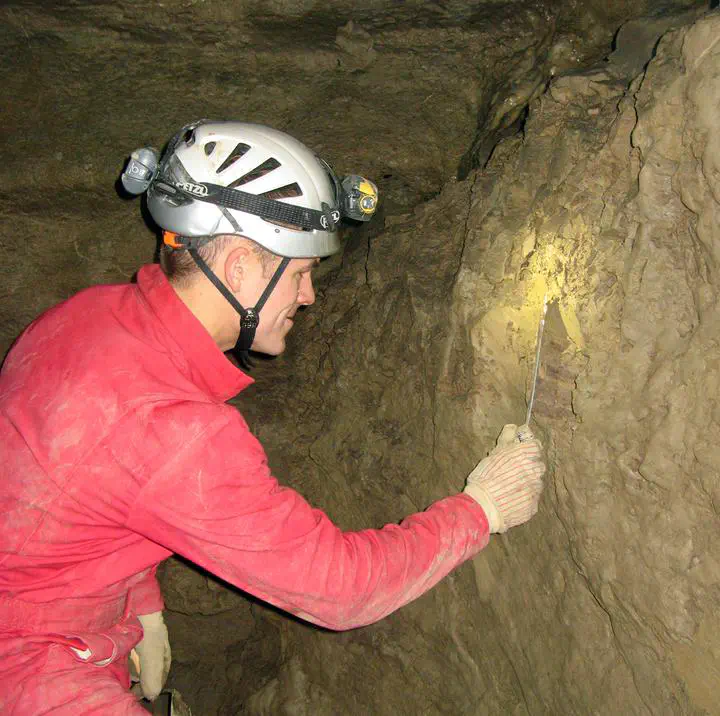Studying paleoclimate through New England cave sediments
 Cleaning off a profile of fine-grained sediments in Weybridge Cave, Vermont.
Cleaning off a profile of fine-grained sediments in Weybridge Cave, Vermont.
As part of my undergraduate thesis at Middlebury College, I worked with Will Amidon and Jeff Munroe to search for potential paleoclimate records in New England caves. We found a sequence of sediments in Weybridge Cave, Vermont, and used luminescence and paleomagnetic technqiues to show that the sediments span from 35 to 70 ka. This is significantly older than any surface sediments in New England, which were all deposited after the last glacial maximum (~26 ka).1 We combined the Weybridge Cave record with other sedimentary records from the region to calculate rates of Laurentide Ice Sheet advance during the last glaciation. Read the full details at:
Munroe, J., Perzan, Z., and Amidon, W., 2016. Cave sediments constrain the latest Pleistocene advance of the Laurentide ice sheet in the Champlain Valley, Vermont, USA. Journal of Quaternary Science, 31 (8), pp. 893-904.
During this research, I was lucky enough to be the first to use Middlebury’s new luminescence geochronology lab and spent many hours toiling away in the dark room figuring out our brand new instrument. Given the potential for partial bleaching and the fact that most samples were at or near saturation, New England cave sediemnts probably weren’t the easiest samples to start out with.2
As part of this project, I also collected a young stalactite and took it to the clean lab at the University of Quebec at Montreal for U-Th age dating. For his undergraduate thesis, Drew Gorin (another Middlebury geology student) then combined those ages with stable isotope measurements to construct a late Holocene precipitation and temperature record.3
-
Estimates differ, but see Dyke et al. (2002), Mickelson and Colgan (2003) and Ridge (2004) for more info. ↩︎
-
Counterintuitively, luminescence-based dating techniques are not well suited to cave sediments because of the high potential for partial bleaching; sediments deposited at the surface usually have direct exposure to sunlight, whereas sediments deposited in one chamber of a cave could be eroded and deposited in another chamber, without ever being exposed to light. In this way, luminescence ages on cave sediments represent the time they first entered the cave, not the time they were deposited in the sequence. ↩︎
-
Gorin, Andrew L., 2016. Paleoclimate Reconstruction from a Weybridge Cave Speleothem, Vermont. Undergraduate Thesis, Middlebury College, Middlebury, VT, 72p. ↩︎